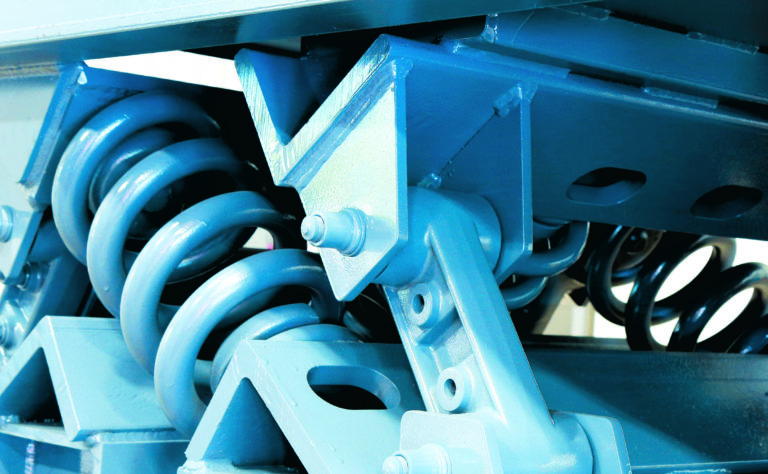
Posted on June 28th, 2019 by Carrier Vibrating
Vibrating equipment is the workhorse of most processing facilities, where it can be used to dry, cool, sort, screen, feed, and convey. Foundry vibratory equipment is used to de-mold and shakeout, convey sand or castings, and cool castings without cracking or damaging them. When a facility relies on vibratory equipment to ensure efficiency and a high-quality product, it becomes essential that the most important part of the equipment is maintained and kept working properly- the springs.
In vibratory equipment, the springs increase the efficiency of the equipment by increasing the vibration, with some designs only needing an occasional power boost to keep the equipment vibrating; the springs do most of the work once they get started. Huge conveyors can be run with a single motor because of the way the springs take up most of the work through the use of natural frequency principles. Springs also support the weight of the equipment plus what is being processed. They also keep vibrations from transferring to the base and the surrounding structure, especially in isolated and balanced designs.
Springs Used in Vibratory Processing Equipment
The three main types of springs used on vibratory processing equipment are steel coil springs, rubber marsh mellow springs, and leaf springs.
Steel Coil Springs
Steel coil springs come in various sizes, can withstand huge amounts of weight under the right conditions, are low maintenance, and are durable throughout a long life.
Marsh Mellow Springs
Marsh mellow springs are made of high-quality rubber and are designed to be squished down and then resume their original tube shape. Since they are rubber, they are quiet, resistant to corrosion, and can be washed down with water, but cannot be used in high-temperature locations.
Leaf Springs
Leaf springs are a flat material length typically used for light-duty applications. Originally made from sheets of wood, modern-day leaf springs are made from either fiberglass and epoxy or steel.
Over time and with use, all of these spring designs can become worn out or damaged and lose some of the springiness that the equipment relies on to operate properly. Springs should be checked to ensure they are the same height as all the other springs, that they are clean and do not have a build-up of dirt or grime, and that there are no signs of damage. Metal springs can get nicks and scratches that significantly weaken them, rubber springs can get cracks, or the rubber can dry out, and fiberglass can get cracks over time from the bending stresses. These issues should be fixed before they cause the spring to fail and cause larger damages or stresses to the vibratory equipment.
Replacement Parts for Vibratory Processing Equipment
Carrier Vibrating Equipment carries over 8,000 replacement parts in stock that are available for shipping within 24 hours and offers a Service Agreement Program for our customers to ensure that their equipment is well-maintained and any preventative maintenance is performed quickly and efficiently before issues arise. Contact us to see how we can help with your vibrating equipment spring maintenance.






